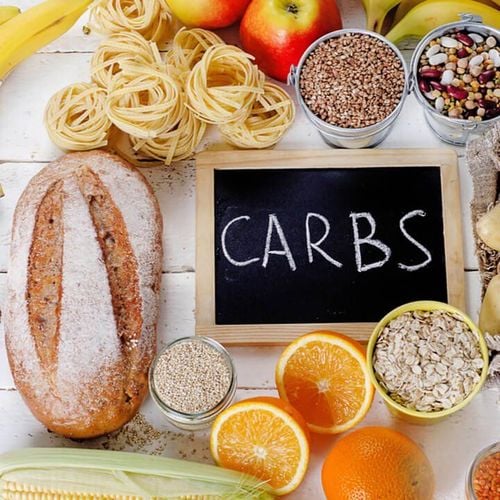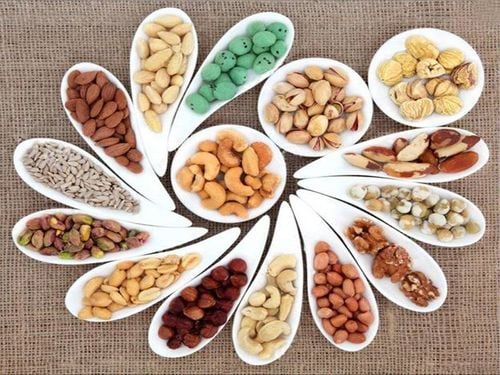This is an automatically translated article.
Whole grains are an important nutrient source rich in zinc, magnesium, B vitamins and fiber. There are many options to increase the amount of whole grain foods in your daily diet. But choosing whole grains needs to be done carefully. Over time, if not stored properly, the oils in whole grains can spoil the foods that contain them. Consider these 10 tips when choosing whole grains or whole grain foods to keep them fresh and safe to eat.
1. Look for whole grain ingredients on the packaging
Whole grains can be an easy choice when it comes to meal prep. Choosing whole grain bread, breakfast cereal or pasta for a breakfast is a convenient choice. See nutrition facts labels and ingredient lists to find whole grain foods that are lower in sodium, saturated fat, and added sugars.

Ngũ cốc nguyên hạt có thể là một bữa sáng lành mạnh
2. Look for the word “whole” at the top of the ingredients list
Some whole grain ingredients include whole oats, whole wheat flour, whole corn, whole brown rice, and whole rye. Products that say “high-grain,” “100% wheat,” “high fiber” on the package, or are brown in color may not be whole grain foods.
3. Kids can choose whole grains
Your child can choose whole grains at school. Accordingly, you should encourage healthier choices at home by adding whole grains to their favorite recipes, meals and snacks.

Bổ sung ngũ cốc nguyên hạt vào đồ ăn nhẹ có lợi cho sức khỏe của trẻ
4. Look for the fiber content on the packaging
If the product contains at least 3 grams of fiber per serving, it is a good source of fiber. If it contains 5 grams or more of fiber per serving, it's a great source of fiber.
5. Do whole grain foods contain gluten?
People who cannot eat wheat gluten can still eat whole grains if they choose carefully. There are many whole grain products, such as buckwheat, certified gluten-free or oatmeal, popcorn, brown rice, wild rice, and quinoa to suit gluten-free dietary needs.
6. Check for novelty of whole grain foods
Buying whole grain products that are tightly packed and well sealed is a wise choice. Grains should always be fresh and smell fresh. Also, check the expiration date and storage instructions on the package.

Ngũ cốc nguyên hạt cần được đóng gói chặt chẽ
7. Close the lid tightly
When storing whole grains from oversized containers, use containers with tight-fitting lids and store in a cool, dry place. An airtight container is important to maintain freshness and reduce bug and insect infestation.
8. Buy what you need
Buy small quantities of whole grain products to reduce spoilage. Most cereals in sealed containers can be kept in the freezer. Only buying whole grain foods suitable for the needs of use is not only beneficial in ensuring quality when used but also saves money for the family.9. Carefully wrapped
Whole grain bread is best stored at room temperature in its original packaging, tightly covered with a quick-release lanyard or lanyard. The refrigerator will cause the bread to quickly lose moisture and go rancid. Properly wrapped cakes will keep well in the freezer.

Các thực phẩm có thành phần ngũ cốc nguyên hạt nên được bảo quản ở nhiệt độ phòng
10. What is the shelf life?
Since the oils in whole grain flours are different, their shelf life is also different. Most whole grain flours will keep well in the refrigerator for 2 to 3 months and in the freezer for 6 to 8 months. Cooked brown rice can be refrigerated for 3 to 5 days and can be frozen for up to 6 months.
Whole grains are very good for health, but to ensure quality and safety when using, you should choose foods that are still fresh, have a long shelf life, are carefully preserved, and avoid the intrusion of harmful chemicals. bugs, bacteria.
Please dial HOTLINE for more information or register for an appointment HERE. Download MyVinmec app to make appointments faster and to manage your bookings easily.
Reference source: choosemyplate.gov












